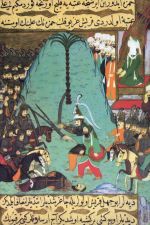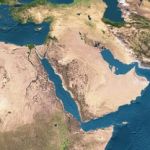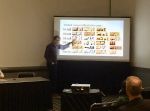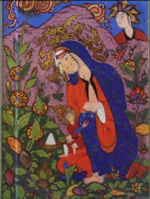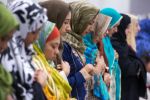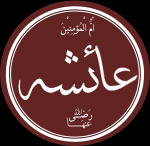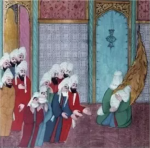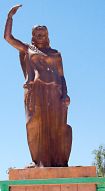Main Page: Difference between revisions
| [unchecked revision] | [unchecked revision] |
No edit summary |
Lightyears (talk | contribs) No edit summary |
||
| (43 intermediate revisions by 2 users not shown) | |||
| Line 1: | Line 1: | ||
{{#seo: | |||
|title=WikiIslam - the online resource on Islam | |||
|keywords=Islam, Hadith, Skepticism, Allah, Quran | |||
|description=WikiIslam aims to provide accurate and accessible information from traditional and critical perspectives on the beliefs, practices, and development of Islam. | |||
{{DISPLAYTITLE:<span style="position: absolute; clip: rect(1px 1px 1px 1px); clip: rect(1px, 1px, 1px, 1px);">{{FULLPAGENAME}}</span>}} | |image=Logo.square.wordmark.png | ||
|image_alt=WikiIslam Logo | |||
}}{{DISPLAYTITLE:<span style="position: absolute; clip: rect(1px 1px 1px 1px); clip: rect(1px, 1px, 1px, 1px);">{{FULLPAGENAME}}</span>}} | |||
<!-- Beginning of header section --> | <!-- Beginning of header section --> | ||
<!--No Mobile Block --> | <!--No Mobile Block --> | ||
<div class="nomobile"> | <div class="nomobile"> | ||
<div class="divTable" style="width:100%;margin-top:+.7em;background-color:#283763;border:1px solid #ccc"> | <div class="divTable" style="width:100%;margin-top:+.7em;background-color:#283763;border:1px solid #ccc"> | ||
<div class="divTableBody"> | <div class="divTableBody"> | ||
| Line 35: | Line 36: | ||
<!-- Start Left Column --> | <!-- Start Left Column --> | ||
<div class="divTableCell"> | <div class="divTableCell"> | ||
<div id="importantnote" style="width:100%;text-align:left;font-size: | <div id="importantnote" style="width:100%;text-align:left;font-size:105%;"><!--<span style="color:red">Notice:</span> --> | ||
* A number of transformative steps have been undertaken as part of an ongoing effort to improve the content, professionalism, and reliability of WikiIslam..[[WikiIslam:Renovations|read more]] | |||
* Help Wanted: [[WikiIslam: Contribute|Contribute Today]] | |||
</div> | |||
</div> | </div> | ||
</div> | </div> | ||
| Line 42: | Line 46: | ||
</div> | </div> | ||
<!-- End No Mobile Block --> | <!-- End No Mobile Block --> | ||
<!-- Start | <!-- Start the Portal Block --> | ||
*[[ | <div class="articleSummaryColumnsWrapper"> | ||
*[[ | <div class="articleSummaryColumn"> | ||
*[[List of | {{PortalArticle|image=Battle of Badr.jpg|title=Portal: Early Islamic History|summary=The first centuries of the Islamic Hijri calendar, starting in the CE year 622, were the formative years of the religion. Between the first and third Islamic centuries the Qur'an was written down and codified, the prophet lived and died, the great hadith collections were gathered, the sira of the prophet was committed to writing, the great schools of Sunni jurisprudence came to be, and the theology of Islam attained its familiar form. These years thus can be said to cover the formation of the religion of Islam as we know it today. |description= | ||
*[[ | <div style="padding: 4px;padding-left: 8px; padding-right: 8px;background: #283763; border: 1px solid #DEB330; color:#ffffff; font-size: 1.2em;">'''Sections'''</div> | ||
*[[ | <div style="column-count:2;-moz-column-count:2;-webkit-column-count:2"> | ||
*[[ | *[[Portal: Early Islamic History#Career of the Prophet|Career of the Prophet]] | ||
*[[ | *[[Portal: Early Islamic History#The Early Caliphates|The Early Caliphates]] | ||
*[[ | *[[Portal: Early Islamic History#The Formation of the Qur'an and Classical Arabic|The Formation of the Qur'an and Classical Arabic]] | ||
</div> | |||
<div style="padding: 4px;padding-left: 8px; padding-right: 8px;background: #283763; border: 1px solid #DEB330; color:#ffffff; font-size: 1.2em;">'''Popular Articles'''</div><div style="column-count:2;-moz-column-count:2;-webkit-column-count:2"> | |||
*[[History of Islamic Thought]] | |||
*[[Dihya the Berber Queen (Al-Kaahina)]] | |||
*[[Battle of Badr]] | |||
*[[List of expeditions of Muhammad]] | |||
*[[The Massacre of the Banu Qurayza]] | |||
</div> | |||
}} | |||
{{PortalArticle|image=Terrain map.jpg|title=Portal: Origins of Islam|summary= Islam arose in 7th century Arabia, and as such its appearance bears the markings of its ancient Arab and Near East milieu. |description= | |||
<div style="padding: 4px;padding-left: 8px; padding-right: 8px;background: #283763; border: 1px solid #DEB330; color:#ffffff; font-size: 1.2em;">'''Sections'''</div> | |||
<div style="column-count:2;-moz-column-count:2;-webkit-column-count:2"> | |||
*[[Portal: Origins of Islam#Pre-Islamic Arab Religion|Pre-Islamic Arab Religion]] | |||
*[[Portal: Origins of Islam#The Formation of the Qur'an and Classical Arabic|The Formation of the Qur'an and Classical Arabic]] | |||
*[[Portal: Origins of Islam#Ancient Arabian Culture|Ancient Arabian Culture]] | |||
</div> | |||
<div style="padding: 4px;padding-left: 8px; padding-right: 8px;background: #283763; border: 1px solid #DEB330; color:#ffffff; font-size: 1.2em;">'''Popular Articles'''</div><div style="column-count:2;-moz-column-count:2;-webkit-column-count:2"> | |||
*[[Textual History of the Qur'an]] | |||
*[[Sana'a Manuscript]] | |||
*[[Parallels Between the Qur'an and Late Antique Judeo-Christian Literature]] | |||
*[[Pre-Islamic Arab Religion in Islam]] | |||
*[[Black Stone]] | |||
</div>}}{{PortalArticle|image=Islamic Tradition.jpg|title=Portal: Qur'an, Hadith, and Scholars|summary= The Qur'an, Hadith, Scripture pages are a special category of pages here at WikiIslam. Rather than being encyclopedia articles, these pages bring together a unique collection of Quranic verses, hadith, sira traditions, tafsir, writings of classical scholars and rulings of contemporary Islamic sheikhs and ulemaa. These pages are organized by theme to assist the student, searcher or researcher. |description= | |||
<div style="padding: 4px;padding-left: 8px; padding-right: 8px;background: #283763; border: 1px solid #DEB330; color:#ffffff; font-size: 1.2em;">'''Sections'''</div> | |||
<div style="column-count:2;-moz-column-count:2;-webkit-column-count:2"> | |||
*[[Portal: Qur'an, Hadith, and Scholars#The Islamic Tradition Itself|The Islamic Tradition]] | |||
*[[Portal: Qur'an, Hadith, and Scholars#Muhammad|Muhammad]] | |||
*[[Portal:_Qur'an, Hadith, and Scholars#Good Manners and Helping Others|Good Manners and Helping Others]] | |||
*[[Portal: Qur'an, Hadith, and Scholars#Women|Women]] | |||
*[[Portal: Qur'an, Hadith, and Scholars#Jihad|Jihad]] | |||
*[[Portal: Qur'an, Hadith, and Scholars#Non-Muslims|Non-Muslims]] | |||
*[[Portal: Qur'an, Hadith, and Scholars#Miscellaneous|Miscellaneous]] | |||
</div> | |||
<div style="padding: 4px;padding-left: 8px; padding-right: 8px;background: #283763; border: 1px solid #DEB330; color:#ffffff; font-size: 1.2em;">'''Popular Articles'''</div><div style="column-count:2;-moz-column-count:2;-webkit-column-count:2"> | |||
*[[Qur'an, Hadith and Scholars:Good Manners (Adab)|Good Manners (Adab)]] | |||
*[[Qur'an, Hadith and Scholars:Caring for the Poor|Caring for the Poor]] | |||
*[[Qur'an, Hadith and Scholars:Forgiving Others|Forgiving Others]] | |||
*[[Qur'an, Hadith and Scholars:Hospitality|Hospitality]] | |||
*[[Qur'an, Hadith and Scholars:Slavery|Slavery]] | |||
*[[Qur'an, Hadith and Scholars:Apostasy|Apostasy]] | |||
*[[Qur'an, Hadith and Scholars:Stoning|Stoning]] | |||
*[[Qur'an, Hadith and Scholars:Homosexuality|Homosexuality]] | |||
*[[Qur'an, Hadith and Scholars:Witchcraft and the Occult|Witchcraft and the Occult]] | |||
*[[Qur'an, Hadith and Scholars:Female Genital Mutilation|FGM]] | |||
</div>}} | |||
{{PortalArticle|image=Quran_Mashaf_Comparisons.jpg|title=Portal: Islamic Scriptures|summary=The idea of scripture is central to Islam; above all else, Islam's own scriptures tell of how Allah has periodically given his followers books throughout the ages, and refers to Islam's co-Abrahamic religionists as People of the Book. The central scripture of Islam is above all the Qur'an, which orthodox Sunni and Shi'i Islam see as the literal word of Allah through his messenger Muhammad. |description= | |||
<div style="padding: 4px;padding-left: 8px; padding-right: 8px;background: #283763; border: 1px solid #DEB330; color:#ffffff; font-size: 1.2em;">'''Sections'''</div> | |||
<div style="column-count:2;-moz-column-count:2;-webkit-column-count:2"> | |||
*[[Portal: Islamic Scriptures#Qur'an|Qur'an]] | |||
*[[Portal: Islamic Scriptures#Hadith|Hadith]] | |||
*[[Portal: Islamic Scriptures#Sira|Sira]] | |||
*[[Portal: Islamic Scriptures#Tafsir|Tafsir]] | |||
</div> | |||
<div style="padding: 4px;padding-left: 8px; padding-right: 8px;background: #283763; border: 1px solid #DEB330; color:#ffffff; font-size: 1.2em;">'''Popular Articles'''</div><div style="column-count:2;-moz-column-count:2;-webkit-column-count:2"> | |||
*[[Contradictions in the Quran]] | |||
*[[Naskh (Abrogation)]] | |||
*[[Sahih Bukhari]] | |||
*[[Asbab al-Nuzul (Revelational Circumstances of the Quran)]] | |||
</div> | |||
}} | |||
{{PortalArticle|image=Fiqh.jpeg|title=Portal: Islamic Law|summary=Islamic law, or the Shariah, is held to comprise the specific rulings intended by Allah for all of mankind in all times and places and delivered through Islamic scriptures (namely, the Quran and hadith). Fiqh, or Islamic jurisprudence, comprises the legal and interpretive theories through which these rulings are derived from the Quran and hadith. Norms observed and prescribed by Muhammad in these scriptures are, as a rule, taken literally and considered binding. |description= | |||
<div style="padding: 4px;padding-left: 8px; padding-right: 8px;background: #283763; border: 1px solid #DEB330; color:#ffffff; font-size: 1.2em;">'''Sections'''</div> | |||
<div style="column-count:2;-moz-column-count:2;-webkit-column-count:2"> | |||
*[[Portal: Islamic Law#Theory|Theory]] | |||
*[[Portal: Islamic Law#Women|Women]] | |||
*[[Portal: Islamic Law#Non-Muslims|Non-Muslims]] | |||
*[[Portal: Islamic Law#Crime and punishment|Crime and punishment]] | |||
*[[Portal: Islamic Law#Jihad|Jihad]] | |||
*[[Portal: Islamic Law#Ritual|Ritual]] | |||
*[[Portal: Islamic Law#Other topics in Islamic law|Other topics in Islamic law]] | |||
</div> | |||
<div style="padding: 4px;padding-left: 8px; padding-right: 8px;background: #283763; border: 1px solid #DEB330; color:#ffffff; font-size: 1.2em;">'''Popular Articles'''</div><div style="column-count:2;-moz-column-count:2;-webkit-column-count:2"> | |||
*[[Sex Segregation in Islam]] | |||
*[[Islam and Apostasy]] | |||
*[[Jihad in Islamic Law]] | |||
*[[Slavery in Islamic Law]] | |||
*[[Relationships with non-Muslims in Islamic Law]] | |||
*[[Taqiyya|Taqiyya (and misuse of the word online)]] | |||
</div> | |||
}} | |||
{{PortalArticle|image=Tawheed.jpg|title=Portal: Islamic Doctrine|summary=There is much in Islamic scripture that is not of direct legal relevance and which can be understood as constituting doctrine. The Arabic word aqeedah, or creed, has generally been understood to encompass a more limited range of ideas than what, to a modern person, would appear as Islamic doctrine. |description= | |||
<div style="padding: 4px;padding-left: 8px; padding-right: 8px;background: #283763; border: 1px solid #DEB330; color:#ffffff; font-size: 1.2em;">'''Sections'''</div> | |||
<div style="column-count:2;-moz-column-count:2;-webkit-column-count:2"> | |||
*[[Portal: Islamic Doctrine#God|God]] | |||
*[[Portal: Islamic Doctrine#Other beings|Other beings]] | |||
*[[Portal: Islamic Doctrine#Earthly places and relics|Earthly places and relics]] | |||
*[[Portal: Islamic Doctrine#Past and future events|Past and future events]] | |||
*[[Portal: Islamic Doctrine#Society and human nature|Society and human nature]] | |||
</div> | |||
<div style="padding: 4px;padding-left: 8px; padding-right: 8px;background: #283763; border: 1px solid #DEB330; color:#ffffff; font-size: 1.2em;">'''Popular Articles'''</div><div style="column-count:2;-moz-column-count:2;-webkit-column-count:2"> | |||
*[[Houri (Heavenly Virgin)]] | |||
*[[Let There be no Compulsion in Religion|Let There be no Compulsion in Religion (Qur'an 2:256)]] | |||
*[[Jinn]] | |||
*[[Black Stone]] | |||
</div> | |||
}} | |||
</div><div class="articleSummaryColumn"> | |||
{{PortalArticle|image=Quran and Science.png|title=Portal: Islam and Science|summary=Among the many and diverse matters discussed in or touched upon by Islamic scriptures are topics of direct or indirect scientific interest. These topics include reproductive science, embryology, cosmology, and medicine, among others. |description= | |||
<div style="padding: 4px;padding-left: 8px; padding-right: 8px;background: #283763; border: 1px solid #DEB330; color:#ffffff; font-size: 1.2em;">'''Sections'''</div> | |||
<div style="column-count:2;-moz-column-count:2;-webkit-column-count:2"> | |||
*[[Portal: Islam and Science#Biology|Biology]] | |||
*[[Portal: Islam and Science#Cosmology|Cosmology]] | |||
*[[Portal: Islam and Science#Islamic practices and rituals|Islamic practices and rituals]] | |||
*[[Portal: Islam and Science#Prominent figures and movements|Prominent figures and movements]] | |||
</div> | |||
<div style="padding: 4px;padding-left: 8px; padding-right: 8px;background: #283763; border: 1px solid #DEB330; color:#ffffff; font-size: 1.2em;">'''Popular Articles'''</div><div style="column-count:2;-moz-column-count:2;-webkit-column-count:2"> | |||
*[[Scientific Errors in the Quran]] | *[[Scientific Errors in the Quran]] | ||
*[[ | *[[Embryology in the Qur'an]] | ||
*[[ | *[[Scientific Miracles in the Quran]] | ||
*[[ | *[[Islamic Views on the Shape of the Earth]] | ||
*[[ | *[[Geocentrism and the Quran]] | ||
*[[ | *[[Cosmology of the Quran]] | ||
*[[ | </div>}} | ||
*[[ | {{PortalArticle|image=Mary In the Quran.PNG|title=Portal: Islam and the Judeo-Christian Tradition|summary=The Qur'an and Sunnah make constant reference to stories from the Judeao-Christian tradition. The audience for the Qur’an was clearly well-acquainted with these stories and the Qur'an itself says that it is a "reminder" (73:19) of the message which came before. The stories referenced are not only from the Bible, but come from a wide variety of literary traditions from within ancient near east Christianity and Judaism. |description= | ||
*[[ | <div style="padding: 4px;padding-left: 8px; padding-right: 8px;background: #283763; border: 1px solid #DEB330; color:#ffffff; font-size: 1.2em;">'''Sections'''</div> | ||
*[[ | <div style="column-count:2;-moz-column-count:2;-webkit-column-count:2"> | ||
*[[ | *[[Portal: Islam and the Judeo-Christian Tradition#Islam and the Hebrew Bible Tradition|Islam and the Hebrew Bible Tradition]] | ||
*[[Portal: Islam and the Judeo-Christian Tradition#Islam and the Christian Scriptural Tradition|Islam and the Christian Scriptural Tradition]] | |||
*[[Portal: Islam and the Judeo-Christian Tradition#Islam and extra-biblical Stories from the Jewish and Christian Traditions|Islam and extra-biblical Stories from the Jewish and Christian Traditions]] | |||
</div> | |||
<div style="padding: 4px;padding-left: 8px; padding-right: 8px;background: #283763; border: 1px solid #DEB330; color:#ffffff; font-size: 1.2em;">'''Popular Articles'''</div><div style="column-count:2;-moz-column-count:2;-webkit-column-count:2"> | |||
*[[Seven Sleepers of Ephesus in the Quran]] | |||
*[[Mary, Sister of Aaron]] | |||
*[[Lut]] | |||
*[[Dhul-Qarnayn and the Alexander Romance]] | |||
*[[Parallels Between the Qur'an and Late Antique Judeo-Christian Literature]] | |||
</div> | |||
}} {{PortalArticle|image=Muslim-usa.jpg|title=Portal: Islam and Human Rights|summary=The conflict between modern human rights doctrine and Islamic law can, for the most part, be understood as a product of their extreme historical and contextual distance. Whereas Islamic law was formulated in the harsh, unpredictable, and austere environment of 7th-9th century Arabia, modern Human rights doctrine is generally traced back to the European Enlightenment. |description= | |||
<div style="padding: 4px;padding-left: 8px; padding-right: 8px;background: #283763; border: 1px solid #DEB330; color:#ffffff; font-size: 1.2em;">'''Sections'''</div> | |||
<div style="column-count:2;-moz-column-count:2;-webkit-column-count:2"> | |||
*[[Portal: Islam and Human Rights#Women|Women]] | |||
*[[Portal: Islam and Human Rights#Religious Minorities|Religious Minorities]] | |||
*[[Portal: Islam and Human Rights#Freedom of Conscience|Freedom of Conscience]] | |||
*[[Portal: Islam and Human Rights#Corporal punishment|Corporal punishment]] | |||
*[[Portal: Islam and Human Rights#Modern movements and events|Modern movements and events]]</div> | |||
<div style="padding: 4px;padding-left: 8px; padding-right: 8px;background: #283763; border: 1px solid #DEB330; color:#ffffff; font-size: 1.2em;">'''Popular Articles'''</div><div style="column-count:2;-moz-column-count:2;-webkit-column-count:2"> | |||
*[[Islam and Women]] | |||
*[[Hijab]] | |||
*[[Rape in Islamic Law]] | |||
*[[Child Marriage in Islamic Law]] | |||
</div>}} | |||
{{PortalArticle|image=Maome.jpeg|title=Portal: Muhammad|summary=Muhammad, the founder of Islam, is one of the most vigorously revered men to have ever lived. His legacy has meant many different things to many different people throughout history. Information on his life comes almost exclusively through oral reports (hadiths) compiled, for the most part, more than a hundred and fifty years after his death. |description= | |||
<div style="padding: 4px;padding-left: 8px; padding-right: 8px;background: #283763; border: 1px solid #DEB330; color:#ffffff; font-size: 1.2em;">'''Sections'''</div> | |||
<div style="column-count:2;-moz-column-count:2;-webkit-column-count:2"> | |||
*[[Portal: Muhammad#Personal life|Personal life]] | |||
*[[Portal: Muhammad#Military life|Military life]] | |||
*[[Portal: Muhammad#Religious life|Religious life]] | |||
*[[Portal: Muhammad#In doctrine|In doctrine]] | |||
*[[Portal: Muhammad#In history|In history]] | |||
*[[Portal: Muhammad#In recent times|In recent times]] | |||
</div> | |||
<div style="padding: 4px;padding-left: 8px; padding-right: 8px;background: #283763; border: 1px solid #DEB330; color:#ffffff; font-size: 1.2em;">'''Popular Articles'''</div><div style="column-count:2;-moz-column-count:2;-webkit-column-count:2"> | |||
*[[Muhammad ibn Abdullah]] | *[[Muhammad ibn Abdullah]] | ||
*[[ | *[[Satanic Verses (Gharaniq Incident)]] | ||
*[[List of Killings Ordered or Supported by Muhammad]] | *[[List of Killings Ordered or Supported by Muhammad]] | ||
*[[ | *[[Prophecies in the Hadith]] | ||
</div> | |||
}} | |||
*[[ | {{PortalArticle|image=Aisha.png|title=Portal: Muhammad’s Wives and Consorts|summary=The wives of the prophet are described as "أمهات المؤمنين" or "mothers of the believers." As such the prophetic example is considered instructive for all Muslim households. How the prophet interacted with his wives, and how they obeyed him, is a framework for how Muslim husbands and wives ought to interact, as well as how men should interact with their own female slaves. |description= | ||
*[[ | <div style="padding: 4px;padding-left: 8px; padding-right: 8px;background: #283763; border: 1px solid #DEB330; color:#ffffff; font-size: 1.2em;">'''Sections'''</div> | ||
<div style="column-count:2;-moz-column-count:2;-webkit-column-count:2"> | |||
*[[Portal: Muhammad’s Wives and Consorts#Aisha|Aisha]] | |||
*[[Portal: Muhammad’s Wives and Consorts#Muhammad's Other Wives and Consorts|Muhammad's Other Wives and Consorts]] | |||
</div> | |||
<div style="padding: 4px;padding-left: 8px; padding-right: 8px;background: #283763; border: 1px solid #DEB330; color:#ffffff; font-size: 1.2em;">'''Popular Articles'''</div><div style="column-count:2;-moz-column-count:2;-webkit-column-count:2"> | |||
*[[Ages of Muhammads Wives at Marriage|Ages of Muhammad's Wives at Marriage]] | *[[Ages of Muhammads Wives at Marriage|Ages of Muhammad's Wives at Marriage]] | ||
*[[ | *[[Aisha's Age]] | ||
*[[ | *[[Aisha]] | ||
*[[Safiyah]] | *[[Safiyah]] | ||
</div> | |||
}} | |||
{{PortalArticle|image=Sahabah.png|title=Portal: Muhammad's Companions and Contemporaries|summary=Muhammad's contemporaries, companions, and successors play an elevated role in the lore of Islam. It is against many of his contemporaries that Muhammad defined his movement, it is through his companions that his tradition was passed forth, and it is by his immediate successors that his legacy was interpreted and formalized. |description= | |||
<div style="padding: 4px;padding-left: 8px; padding-right: 8px;background: #283763; border: 1px solid #DEB330; color:#ffffff; font-size: 1.2em;">'''Sections'''</div> | |||
<div style="column-count:2;-moz-column-count:2;-webkit-column-count:2"> | |||
*[[Portal: Muhammad's Companions and Contemporaries#Male companions|Male companions]] | |||
*[[Portal: Muhammad's Companions and Contemporaries#Female companions|Female companions]] | |||
*[[Portal: Muhammad's Companions and Contemporaries#Opponents|Opponents]] | |||
*[[Portal: Muhammad's Companions and Contemporaries#Others|Others]] | |||
*[[ | |||
*[[ | |||
*[[ | |||
</div> | |||
<div style="padding: 4px;padding-left: 8px; padding-right: 8px;background: #283763; border: 1px solid #DEB330; color:#ffffff; font-size: 1.2em;">'''Popular Articles'''</div><div style="column-count:2;-moz-column-count:2;-webkit-column-count:2"> | |||
*[[Khadijah bint Khuwaylid]] | |||
*[[Abdullah ibn Abd al-Muttalib]] | |||
*[[Ali ibn Abi Talib]] | |||
*[[Umm Qirfa]] | |||
*[[ | |||
*[[ | |||
<!-- | </div> | ||
}} | |||
</div> | |||
</div> | |||
<!-- End The Portal Block --> | |||
<div class="divTable" style="border-spacing: 4px;"> | |||
<div class="divTableBody"> | |||
<div class="divTableRow"> | |||
<!-- Start Left Column --> | |||
<div class="divTableCell" style="background: #FAF4E1; border: 3px solid #DEB330;"> | |||
<div class="divTable"> | |||
<div class="divTableBody"> | |||
<!-- Start Qur'an --> | |||
<div class="divTableRow"> | <div class="divTableRow"> | ||
<div class="divTableHead"> | <div class="divTableHead"> | ||
<div style="margin: 0; background: #DEB330; font-size: 120%; font-weight: bold; border: 1px solid # | <div style="margin: 0; background: #DEB330; font-size: 120%; font-weight: bold; border: 1px solid #a3bfb1; text-align: left; color: #fff; padding: 0.2em 0.4em;">Featured Articles</div> | ||
</div> | </div> | ||
</div> | </div> | ||
<div class="divTableRow"> | <div class="divTableRow"> | ||
<div class="divTableCell"> | <div class="divTableCell"> | ||
*[[ | *[[Allah (God)]] | ||
*[[ | *[[Mary, Sister of Aaron]] | ||
*[[ | *[[If Anyone Slays a Person (Qur'an 5:32)]] | ||
*[[ | *[[Sources of Islamic Theories of Reproduction]] | ||
*[[ | *[[Dhul-Qarnayn and the Sun Setting in a Muddy Spring - Part One]] | ||
*[[ | *[[Dar al-Harb and Dar al-Islam (the Abodes of War and Peace)]] | ||
*[[ | *[[Isa al-Masih (Jesus Christ)]] | ||
*[[Shaheed (Martyr)]] | |||
*[[Sahih Bukhari]] | |||
*[[Parallels Between the Qur'an and Late Antique Judeo-Christian Literature]] | |||
</div> | </div> | ||
</div> | </div> | ||
</div> | </div> | ||
</div> | </div> | ||
</div> | </div> | ||
<!-- Start of right-column --> | <!-- Start of right-column --> | ||
<div class="divTableCell" style="margin: 10px;background: #EAEBF0; border: | <div class="divTableCell" style="margin: 10px;background: #EAEBF0; border: 3px solid #283763;"> | ||
<div class="divTable"> | <div class="divTable"> | ||
<div class="divTableBody"> | <div class="divTableBody"> | ||
<!-- About WikiIslam --> | <!-- About WikiIslam --> | ||
<div class="divTableRow"> | <div class="divTableRow"> | ||
| Line 278: | Line 309: | ||
*[https://ExMuslims.Org Ex-Muslims of North America] | *[https://ExMuslims.Org Ex-Muslims of North America] | ||
*[https://quranx.com QuranX] | *[https://quranx.com QuranX] | ||
*[https://sunnah.one Hadith search engine (Arabic)] | |||
*[https://tafsir.app Tafsir search engine (Arabic)] | |||
*[https://al-maktaba.org/ Islamic texts library (Arabic) ] | |||
*[http://ejtaal.net/aa/#hw4=h14,ll=h38,ls=h1,la=h1,sg=h20,ha=h21,br=h26,pr=h9,aan=h24,mgf=h33,vi=h51,kz=h10,mr=h25,mn=h1,uqw=h106,umr=h26,ums=h14,umj=h34,ulq=h247,uqa=h17,uqq=h2,bdw=h19,amr=h7,asb=h17,auh=h37,dhq=h2,mht=h6,msb=h8,tla=h8,amj=h22,ens=h1,mis=h1 Arabic dictionaries] | |||
</div> | </div> | ||
</div> | </div> | ||
</div> | </div> | ||
</div> | </div> | ||
| Line 299: | Line 322: | ||
</div> | </div> | ||
</div> | </div> | ||
<!-- Random Image --> | <!-- Random Image --> | ||
{{Template:Pictorial-Islam-options}} | {{Template:Pictorial-Islam-options}} | ||
__NOTOC____NOTITLE__ | __NOTOC____NOTITLE__ | ||
Latest revision as of 14:40, 6 August 2023
- A number of transformative steps have been undertaken as part of an ongoing effort to improve the content, professionalism, and reliability of WikiIslam..read more
- Help Wanted: Contribute Today
The first centuries of the Islamic Hijri calendar, starting in the CE year 622, were the formative years of the religion. Between the first and third Islamic centuries the Qur'an was written down and codified, the prophet lived and died, the great hadith collections were gathered, the sira of the prophet was committed to writing, the great schools of Sunni jurisprudence came to be, and the theology of Islam attained its familiar form. These years thus can be said to cover the formation of the religion of Islam as we know it today.
Islam arose in 7th century Arabia, and as such its appearance bears the markings of its ancient Arab and Near East milieu.
The Qur'an, Hadith, Scripture pages are a special category of pages here at WikiIslam. Rather than being encyclopedia articles, these pages bring together a unique collection of Quranic verses, hadith, sira traditions, tafsir, writings of classical scholars and rulings of contemporary Islamic sheikhs and ulemaa. These pages are organized by theme to assist the student, searcher or researcher.
The idea of scripture is central to Islam; above all else, Islam's own scriptures tell of how Allah has periodically given his followers books throughout the ages, and refers to Islam's co-Abrahamic religionists as People of the Book. The central scripture of Islam is above all the Qur'an, which orthodox Sunni and Shi'i Islam see as the literal word of Allah through his messenger Muhammad.
Islamic law, or the Shariah, is held to comprise the specific rulings intended by Allah for all of mankind in all times and places and delivered through Islamic scriptures (namely, the Quran and hadith). Fiqh, or Islamic jurisprudence, comprises the legal and interpretive theories through which these rulings are derived from the Quran and hadith. Norms observed and prescribed by Muhammad in these scriptures are, as a rule, taken literally and considered binding.
There is much in Islamic scripture that is not of direct legal relevance and which can be understood as constituting doctrine. The Arabic word aqeedah, or creed, has generally been understood to encompass a more limited range of ideas than what, to a modern person, would appear as Islamic doctrine.
Among the many and diverse matters discussed in or touched upon by Islamic scriptures are topics of direct or indirect scientific interest. These topics include reproductive science, embryology, cosmology, and medicine, among others.
The Qur'an and Sunnah make constant reference to stories from the Judeao-Christian tradition. The audience for the Qur’an was clearly well-acquainted with these stories and the Qur'an itself says that it is a "reminder" (73:19) of the message which came before. The stories referenced are not only from the Bible, but come from a wide variety of literary traditions from within ancient near east Christianity and Judaism.
The conflict between modern human rights doctrine and Islamic law can, for the most part, be understood as a product of their extreme historical and contextual distance. Whereas Islamic law was formulated in the harsh, unpredictable, and austere environment of 7th-9th century Arabia, modern Human rights doctrine is generally traced back to the European Enlightenment.
Muhammad, the founder of Islam, is one of the most vigorously revered men to have ever lived. His legacy has meant many different things to many different people throughout history. Information on his life comes almost exclusively through oral reports (hadiths) compiled, for the most part, more than a hundred and fifty years after his death.
The wives of the prophet are described as "أمهات المؤمنين" or "mothers of the believers." As such the prophetic example is considered instructive for all Muslim households. How the prophet interacted with his wives, and how they obeyed him, is a framework for how Muslim husbands and wives ought to interact, as well as how men should interact with their own female slaves.
Muhammad's contemporaries, companions, and successors play an elevated role in the lore of Islam. It is against many of his contemporaries that Muhammad defined his movement, it is through his companions that his tradition was passed forth, and it is by his immediate successors that his legacy was interpreted and formalized.
- Allah (God)
- Mary, Sister of Aaron
- If Anyone Slays a Person (Qur'an 5:32)
- Sources of Islamic Theories of Reproduction
- Dhul-Qarnayn and the Sun Setting in a Muddy Spring - Part One
- Dar al-Harb and Dar al-Islam (the Abodes of War and Peace)
- Isa al-Masih (Jesus Christ)
- Shaheed (Martyr)
- Sahih Bukhari
- Parallels Between the Qur'an and Late Antique Judeo-Christian Literature
|
